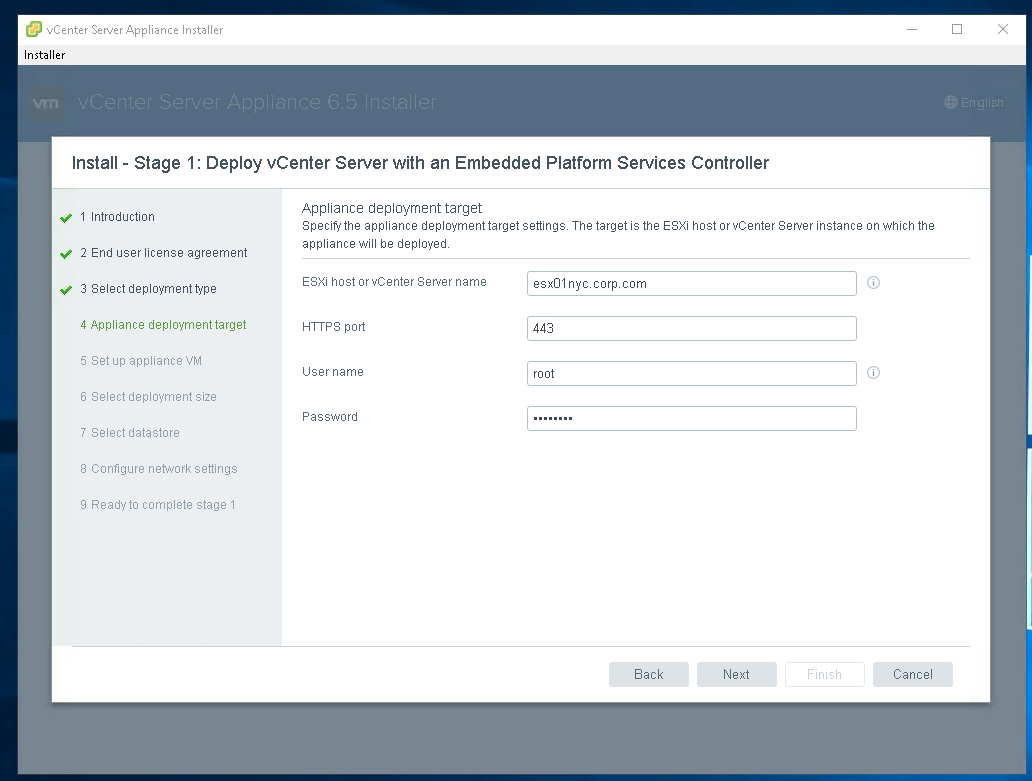

- #VCENTER 6.5 APPLIANCE REMOTE BACKUP POWERCLI MANUAL#
- #VCENTER 6.5 APPLIANCE REMOTE BACKUP POWERCLI FULL#
- #VCENTER 6.5 APPLIANCE REMOTE BACKUP POWERCLI WINDOWS 10#
- #VCENTER 6.5 APPLIANCE REMOTE BACKUP POWERCLI CODE#
- #VCENTER 6.5 APPLIANCE REMOTE BACKUP POWERCLI MAC#
Take a look at the following script that pulls together VM information. PowerCLI can streamline this process by looking at the VM objects in vCenter and applying some PowerShell magic on the output. You might have then spent way too much time clicking around in vCenter looking for an answer. You may have been asked at some point in time, “How many Ubuntu servers do we have in our VMware cluster?”. PowerCLI is able to streamline these with a few important cmdlets to add to your arsenal so let’s cover them in this PowerCLI tutorial. You’re likely to receive countless requests for tasks like retrieving a list of all hard drive sizes on VMs or getting guest OS versions for all your servers among others. The bulk of administrative work inside of VMware is done at the virtual machine level. Getting OS Version Information on your VMs with PowerCLI When asked to locate and analyze which VMs are connected to a particular network in VMware you will now be empowered to provide a PowerCLI reporting solution to this question. With this output, you’ll be able to define what machines are connected and configured for each network. Getting VMs with only a specific port group
#VCENTER 6.5 APPLIANCE REMOTE BACKUP POWERCLI MANUAL#
This saves on the manual labor of creating identical network configurations on each host manually, and is a great way to scale your cluster! In an Enterprise vSphere implementation where there are many ESXi hosts in a cluster, DSwitches simplify the deployment of virtual switches and port groups across a multitude of hosts with the same configuration. In my case, as you see below, I have a single DSwitch which is a Distributed Virtual Switch. If you wish to see the virtual switches configured in your vSphere environment, you will use the following: PS51> Get-VirtualSwitchĭepending on the number of virtual networks and virtual switches you have, your resulting list may be quite large.
#VCENTER 6.5 APPLIANCE REMOTE BACKUP POWERCLI FULL#
The reporting functionality you have at your fingertips is starting to expand! Inspecting Virtual Switches with PowerCLIįor those of us charged with configuring or administering the virtual networks of a vCenter cluster, there is a full range of networking cmdlets for any use case. If you are ever troubleshooting an issue and need to know the number of virtual machines on a given host or have a need to use VMware PowerCLI to gather ESXi host information, you can use these cmdlets going forward. If you were to choose to not specify an individual host, as I have done above, you’ll receive a table of information for each subsequent host and the VMs on each. The output above provides a full status list of currently running VMs on a given host. While you’re connected to your vCenter server or ESXi host, run the following cmdlet. VMware PowerCLI provides a cmdlet directly for this purpose, to gather detailed information called Get-VMHost. Gather Information on ESXi Hosts with PowerCLIīefore you dive into the virtual layer of our vSphere environment, it is a good idea to review the physical hardware layer.
#VCENTER 6.5 APPLIANCE REMOTE BACKUP POWERCLI WINDOWS 10#
I will be working from a Windows 10 workstation with Windows PowerShell 5.1, but you’re welcome to use PowerShell 6 instead as there’s feature parity for this tutorial. If not, check out this PowerCLI installation article. You have PowerCLI already installed and are connected.
#VCENTER 6.5 APPLIANCE REMOTE BACKUP POWERCLI MAC#
You’re working on a Windows (Or Mac / Linux) workstation.You have a VMware ESXi host or vCenter appliance for connecting to and testing.You don’t have to be a PowerShell expert, by any means, but any PowerShell familiarity you have will serve you well. For this article, I’m going to be assuming that:
#VCENTER 6.5 APPLIANCE REMOTE BACKUP POWERCLI CODE#


 0 kommentar(er)
0 kommentar(er)
